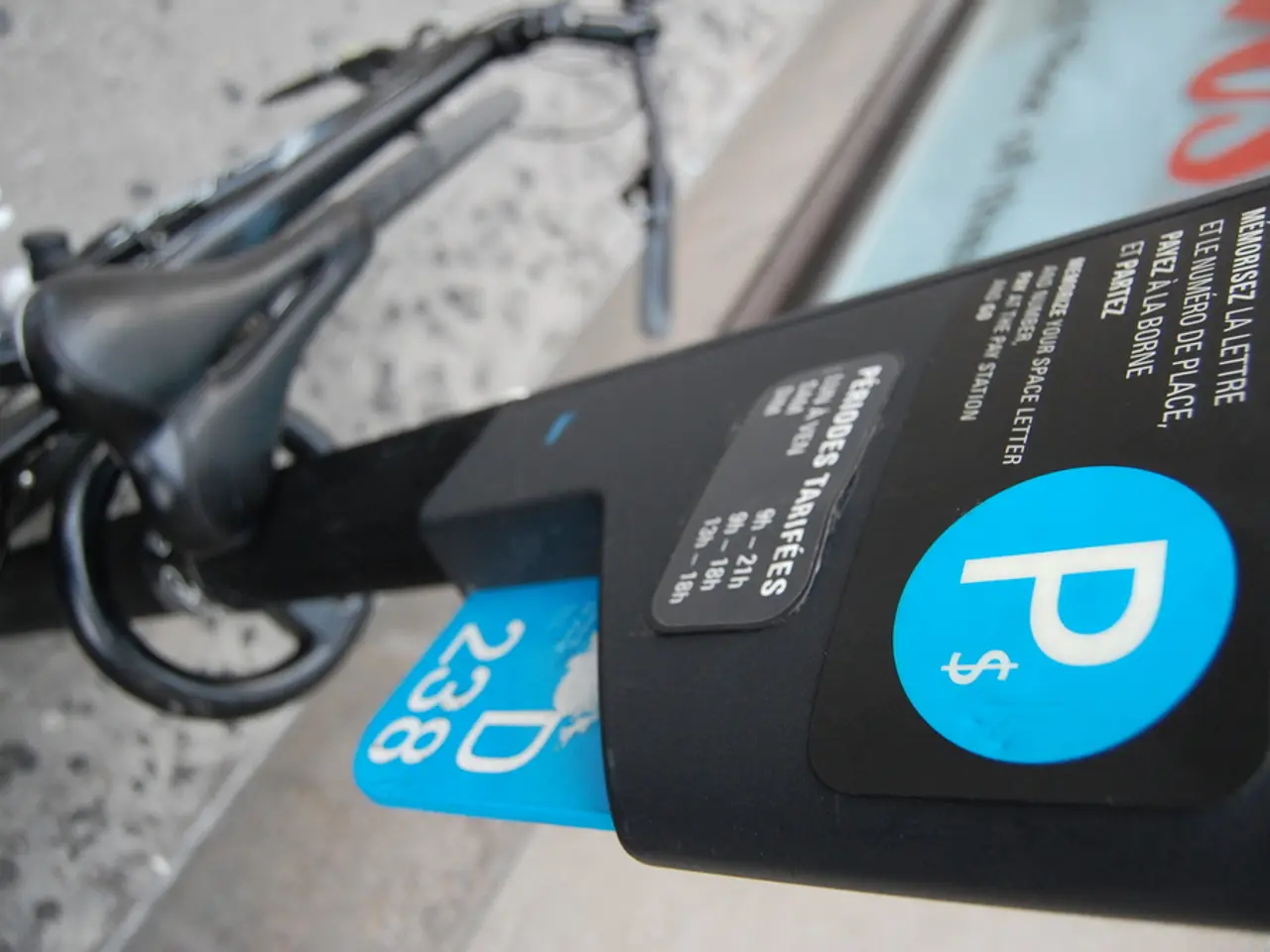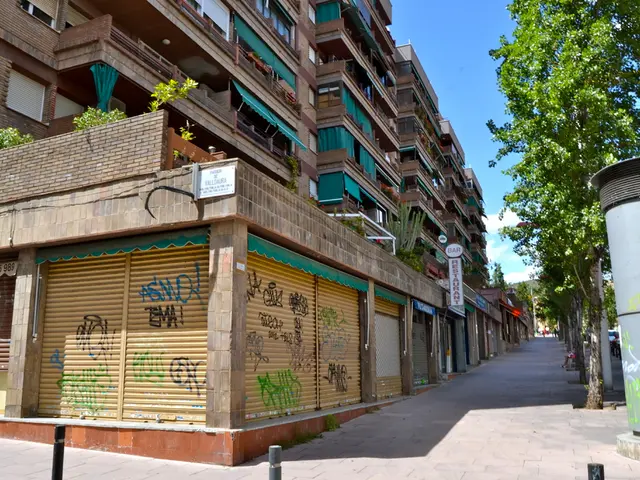Resurfacing a Driveway: DIY Guide with Timeframes for Use
In the quest to enhance the kerb appeal of your home and provide a functional parking space, resurfacing your driveway is a worthwhile investment. The process varies depending on the material used, but common steps and key considerations remain essential across all options.
For gravel driveways, the common resurfacing steps include clearing the existing surface, leveling and compacting the base, adding a new gravel layer, and compacting again. It's crucial to ensure good drainage to prevent pooling, as regular topping-up may be required due to displacement.
When it comes to block paving, the process involves removing damaged blocks, laying or re-laying the base, placing new blocks with tight joints, compacting with a plate compactor, and brushing in jointing sand. Proper base preparation is essential to avoid shifting, and edge restraints must be secure to prevent movement.
Tarmac (asphalt) driveways require excavation if necessary, grading and compacting the sub-base, applying a binder layer (if multi-layer), laying hot-mix asphalt, compacting with heavy rollers, and allowing curing. Edging should be installed to prevent cracking, and curing time is 3+ days before use. Professional installation is recommended for quality and durability.
Resurfacing a concrete driveway involves preparing and leveling the base, pouring and spreading the concrete, smoothing the surface, and allowing curing. Minimum curing time is 7 days, and reinforcement (e.g., rebar) may be needed for heavier loads. The surface finishing affects durability and appearance.
Resin-bound driveways require cleaning the existing surface, preparing the sub-base if needed, mixing resin with aggregate, applying evenly, and allowing curing. This highly permeable and low-maintenance surface offers wide colour and texture options, with a typical lifespan of 25–30 years. Professional application is recommended for best results.
Surface preparation, drainage, edging and containment, curing times, maintenance, cost, and DIY potential are essential considerations across all materials. Thoroughly cleaning, levelling, and repairing the existing driveway base is crucial to ensure the new surface bonds well and lasts. Proper grading and drainage solutions prevent water damage and prolong driveway life.
Strong, secure edging prevents material movement, cracking, or erosion, especially for flexible surfaces like gravel and tarmac. Tarmac generally requires at least 3 days before use, concrete about 7 days, and resin-bound surfaces need proper curing to achieve durability. Resin-bound surfaces require minimal upkeep (regular sweeping and occasional washing), whereas gravel may need frequent replenishing; block paving joint sand may need replenishment to maintain stability.
Some materials (small tarmac patches, concrete resurfacing, resin kits) can be DIY projects for confident homeowners, but larger jobs or those involving structural base work usually require professionals for lasting results.
Armed with this knowledge, you're now equipped to make informed decisions about resurfacing your driveway, ensuring a long-lasting and visually appealing outcome.
[1] Gravel Driveway Resurfacing: A Step-by-Step Guide. (2021). [online] Available at: https://www.wikihow.com/Resurface-a-Gravel-Driveway [Accessed 10 Mar. 2023].
[2] How to Lay a Tarmac Driveway (Step by Step Guide). (2021). [online] Available at: https://www.wikihow.com/Lay-a-Tarmac-Driveway [Accessed 10 Mar. 2023].
[3] How to Lay a Concrete Driveway: A Step-by-Step Guide. (2021). [online] Available at: https://www.wikihow.com/Lay-a-Concrete-Driveway [Accessed 10 Mar. 2023].
[4] How to Lay a Resin-Bound Driveway (Step by Step Guide). (2021). [online] Available at: https://www.wikihow.com/Lay-a-Resin-Bound-Driveway [Accessed 10 Mar. 2023].
[5] How to Lay a Block Paving Driveway (Step by Step Guide). (2021). [online] Available at: https://www.wikihow.com/Lay-a-Block-Paving-Driveway [Accessed 10 Mar. 2023].
Home-improvement projects, such as resurfacing your driveway, can significantly improve both your home-and-garden aesthetic and functionality. For instance, the home-improvement process of resurfacing a resin-bound driveway offers a low-maintenance, visually appealing, and long-lasting solution (25–30 years), requiring professional application for best results. On the other hand, home-and-garden enthusiasts opting for a block paving driveway can expect a durable, customizable surface, but proper base preparation is essential to prevent shifting and edge restraints must be secure (Home-and-Garden Guide, 2023).




